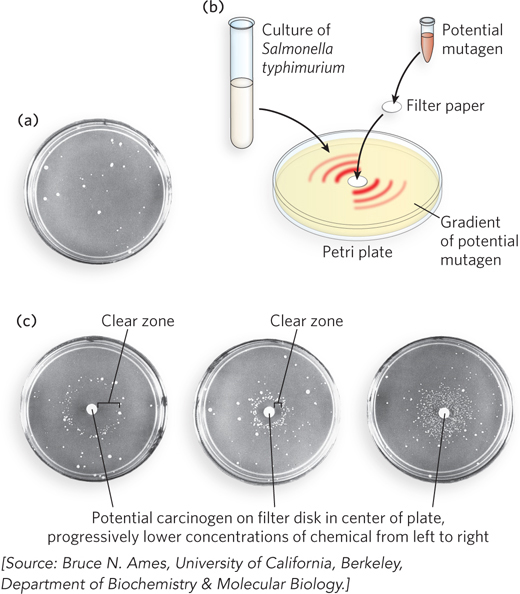
The Ames test for carcinogens, based on mutagenicity. The Ames test uses a strain of Salmonella typhimurium lacking an enzyme needed to synthesize histidine; the bacterium is plated on a histidine- r- r-